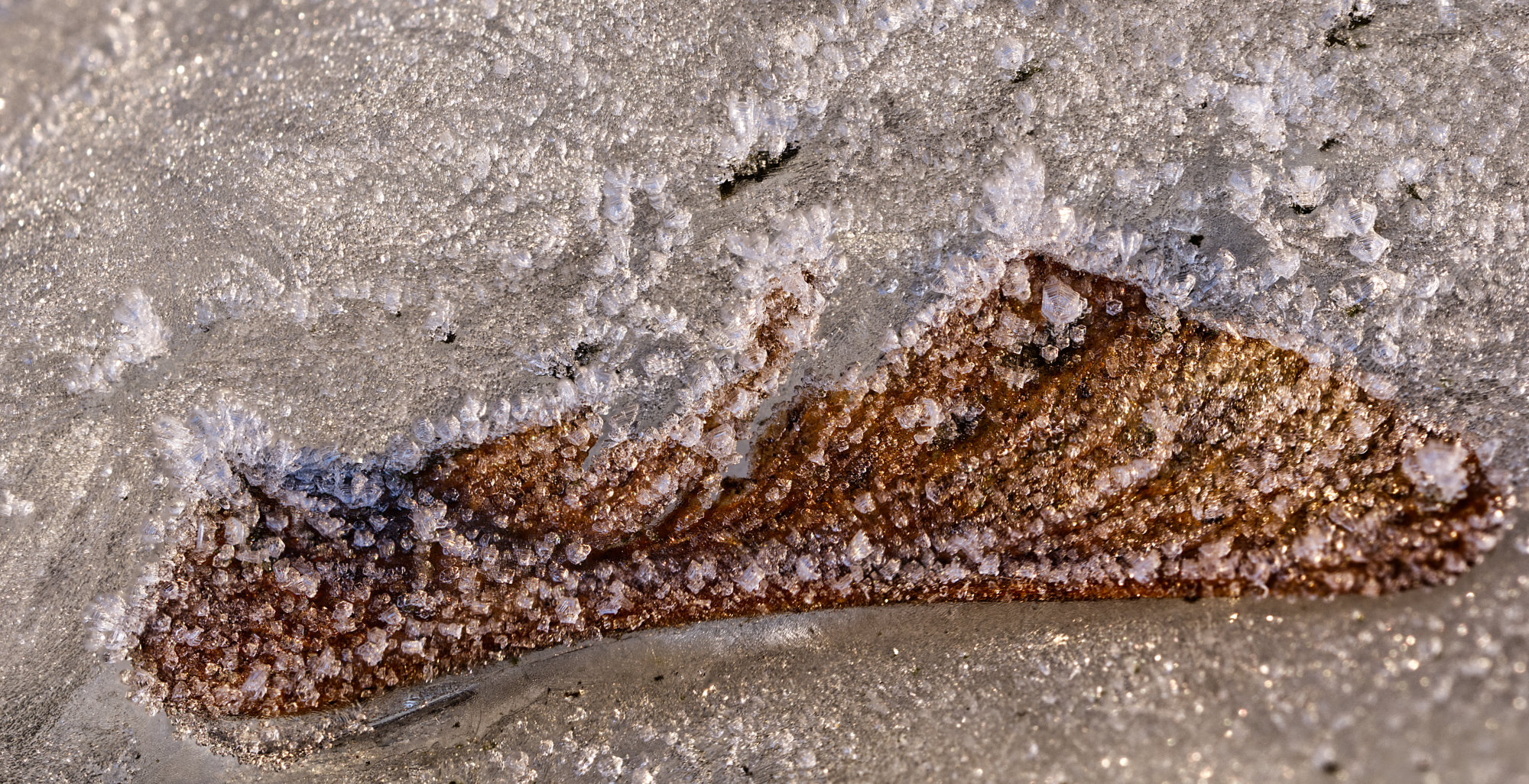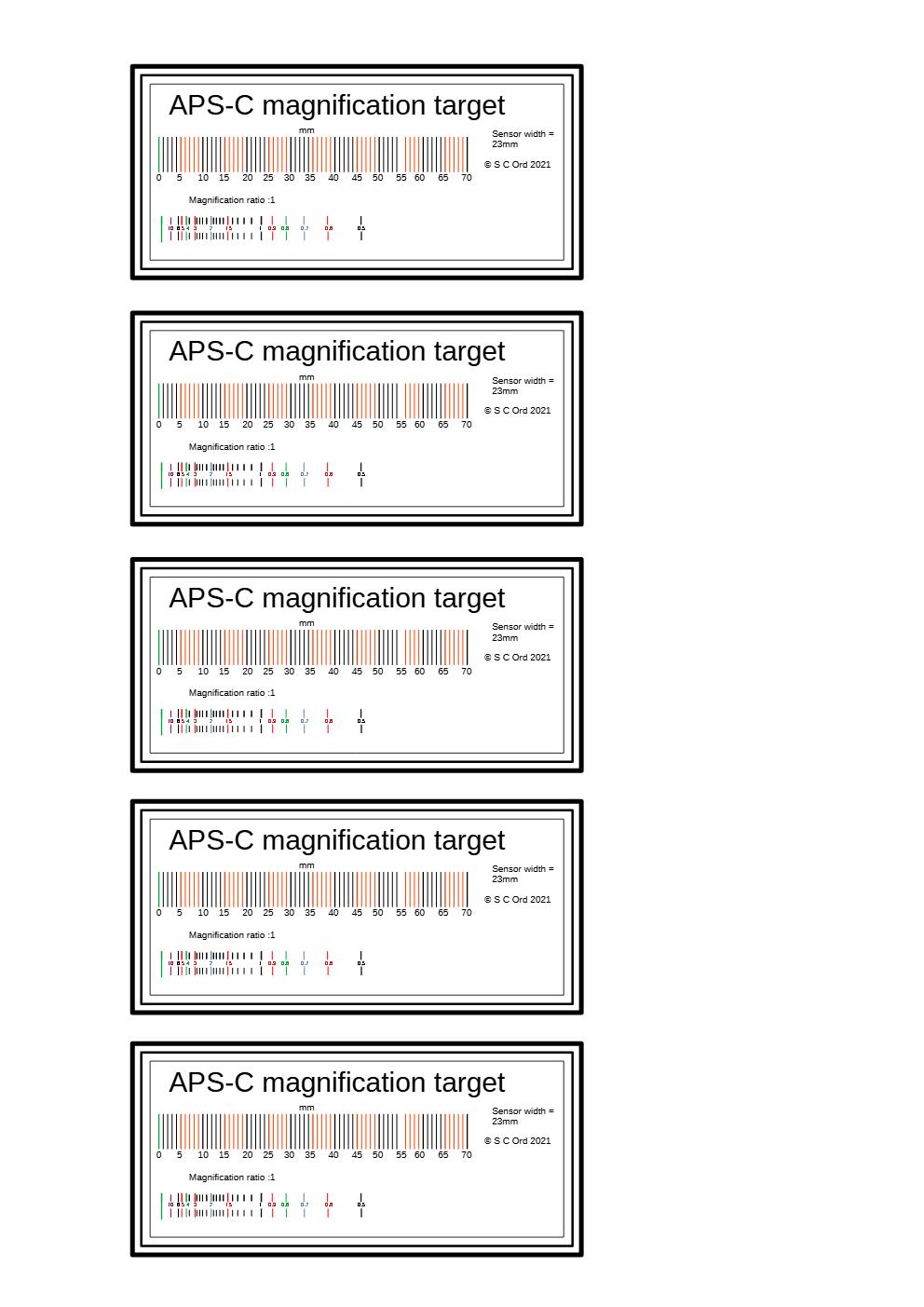Stuart Ord
About the Image(s)
Have you ever tried to photograph frost? I find it's harder than I would have thought.
This was a small leaf frozen to a house window. I hand-held my camera and let it take a stack of 11 images. You'd have thought (well, I would have thought) this would give crystal clear - er - crystals, but I find them lacking in punch despite the usual post processing.
Alas our short cold spell has passed now, and I don't really want it back for another go....
OM Systems OM-1, Olympus 30mm macro lens, 1/45 sec at f6.7 and ISO 80, 11 images merged in Helicon Focus and processed in Affinity 2. Slight cropping takes the magnification up from 1.25:1 to about 1.5:1
7 comments posted
(P.S. neophyte question ... how do you know how much magnification you achieved? I have not figured out where to see the number neither in the camera or in Lightroom. Thank you!) Posted: 02/09/2025 23:14:04
Your question is an interesting one. It surprises me that nearly all of my cameras didn't record the magnification in the EXIF file (do you know what that is and how to read it?). They bung everything under the sun in there, but not magnification, even when coupled to a macro lens. Seems daft to me, but there we are. The only exception in my experience was my Canon M50ii when my Canon MP-E lens was being used. Some EXIFs show the focus distance, which can be used to infer the magnification. Have a look in your camera's EXIF, you might be surprised.
So what do we do if this fails? Measuring the focus distance when you take the picture is one option, but it's not very convenient or even accurate with modern lenses.
Another is knowing the size of your subject, and relating that to your sensor size. So if you fill the frame length with a 36mm long object in a full frame camera, since the sensor is 36mm x 24mm, then you have 36 / 36 = 1x magnification. If you fill the frame length with a 72mm long object, you have 36 / 72 = 0.5x magnification.
Years ago, when messing with combinations of lenses, extension tubes, teleconverters etc, I realised that the latter method is most practical. But an easier way to do it was to make some what I call "macro magnification targets". These are printed, and contain a ruler scale of mm, and the corrsponding magnification. In optics, magnification is simply the object size (what you are photographing) divided by the image size (how big it appears on the sensor). So we need a different target for each sensor size. I have targets for full frame, APS-C, and micro 4/3. I think I'll send these to all group members by email as I don't think I can send files via the DD system. All you do is select the right one for you, then print it on A4. Then check that the mm scale is correct using a ruler. Then you are good to go. Focus on the target, with the camera directly above the target (ie not slanted), then move the camera until the "0" on the magnification scale is on the left edge of the long side of your screen or viewfinder, then the magnification is the last number you can see on the right hand side. Easy! Not something I would do every time, but it's useful in getting the feel of what a particular distance / setting gives you.
Note that these are true magnifications, as defined above. I've always asserted that for, say, micro 4/3, which has a sensor of 18mm x 12mm, it's "unfair" to make such cameras get "twice as close" to their subject to be considered as macro, if you define macro as 1x magnification and above. Similarly for APS-C. So I say "macro is filling the frame with an object 36mm long". By the focussing target, this is 0.5x magnification for micro 4/3, about 0.7x to 0.8x for APS-C. (Nikon and Canon APS-C have slightly different sensor sizes.) But I don't split hairs, and as most macro lenses don't go beyond 1x magnification, anything in that region is good for our group I think. I'll attached the APS-C frame target here so you can see what I mean.
Posted: 02/10/2025 09:58:05
Reversing a prime lens to act as a high-quality "close up filter" used to be a standard technique before proper macro lenses came along. What you can get (in terms of magnification and quality) depends entirely on the lenses used of course. But they are all fiddly to use and usually only give one magnification (focus distance) (even if you use a zoom lens) so they don't hold a candle to a proper macro lens, in my view. We are lucky, our Olympus macro lenses go up to 2x magnification (for the 90mm one), which you can argue is 4x for practical macro comparison (see my argument above). I never got close to that with a reversed lens. Posted: 02/10/2025 10:13:47

